Welcome Tom
Pretty easy straight forward request. Have not noted any changes through the year so we'll let you get by without mentioning when the car was built - this time

Remember that
- this was applied with front fenders not yet installed and as far as I can tell the rear valance was not pulled into the body as of yet in 67.
- Application is from the front leading edge of the pinchweld in front of A pillar to the rear edge of the pinch weld at the valance normally.
- Applied with less pressure but with the same style of spray gun there was allot more overspray on the floor pans and any surface that hung downward (front frame rails, front seat supports on a conv, forward rear spring mounts and so on) to the point of runs often found on the torque box. In pictures allot of it has worn away over the years.
- At the front and rear edge of the rearwheel well opening we often see a fair amount of black overspray onto the areas directly behind produced when the gun reached the edge and began again at the rear.
- When applying the black to area behind the rear wheelwell the angle often produced allot of overspray onto the rear frame rails bottom and outer surface due to the angle.
- All are not the same and angle and depth of overspray was likely related to the height, age and effort of the worker - but they are pretty consistent
- Edge was not masked (upper/outer edge) but instead appears that there was a mask used that normally produced a somewhat "fuzzy" edge to the black.
Hope this helps. Have plenty more - just grabbed a little of this and a little of that as I have a fair amount of examples. NOTE: please be aware that these are original old cars so often much of the lighter overspray is gone or has been cleaned off. In other examples later paint jobs or chipping can cover or have allowed the removal of some of the paint but you can fill in the blanks as you look at all the pictures in total
Applied at a greater angle - more paint (runs) on the close stuff - less overspray further in
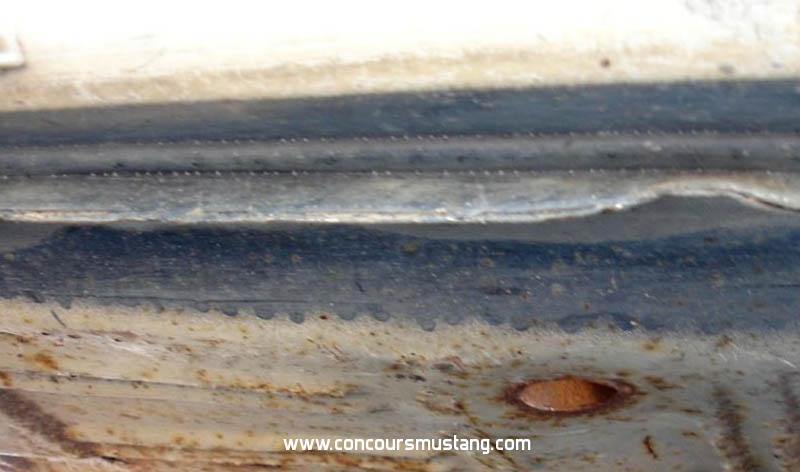
Large amount of overspray behind the rear wheelwell on this example due to angle
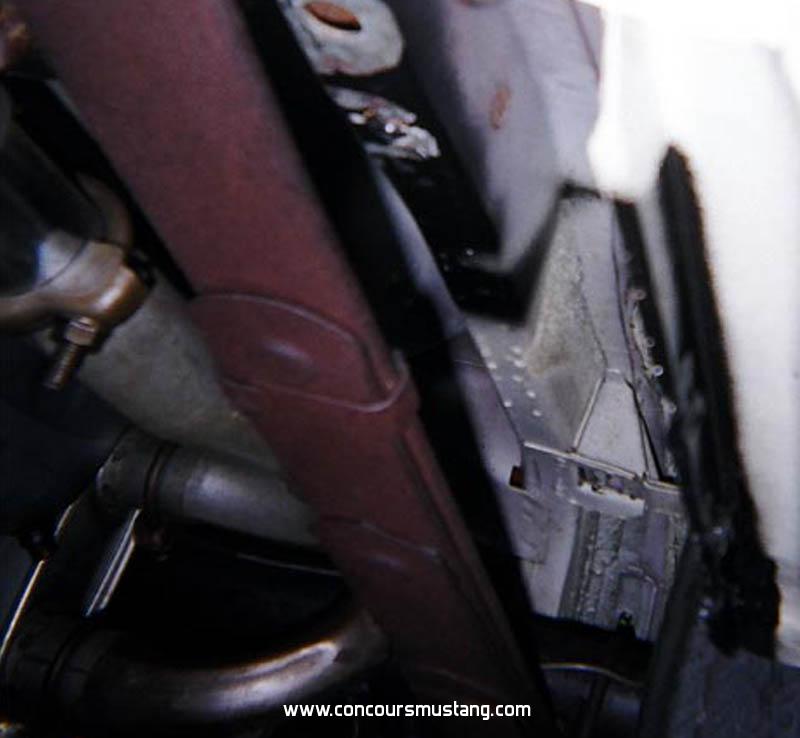
Example of soft edge on the outer edge of the black out - typical
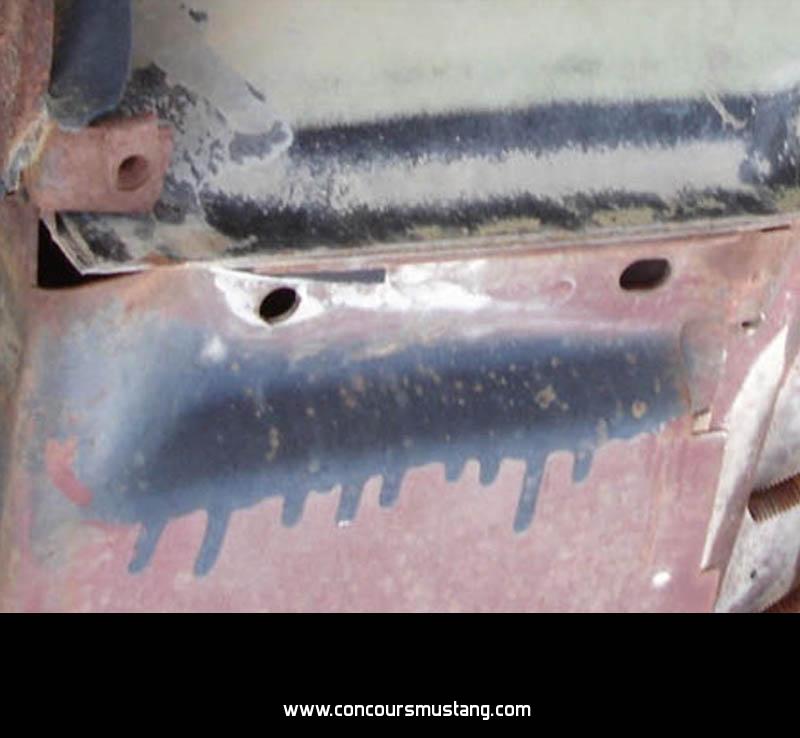
This example a slightly sharper edge but still not tapped nor perfectly straight
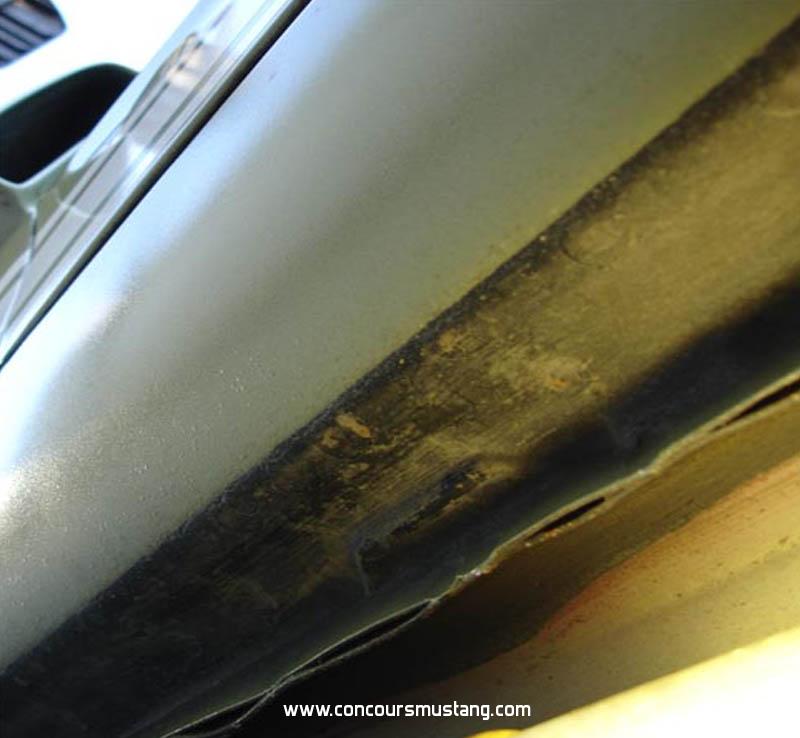
Angle these workers/painters used was not as great compare to some other examples above and below - producing allot more overspray on all the panels below
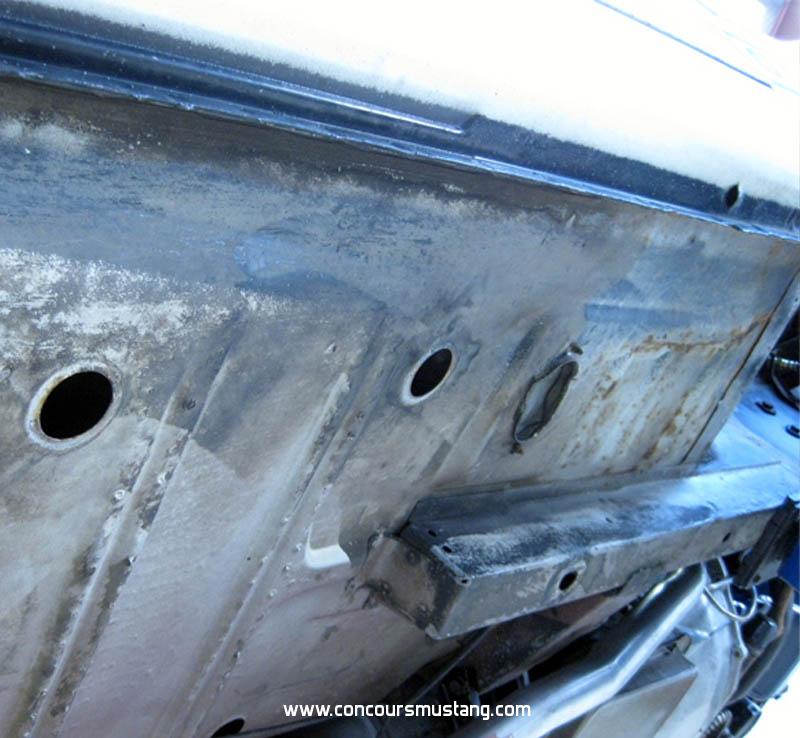
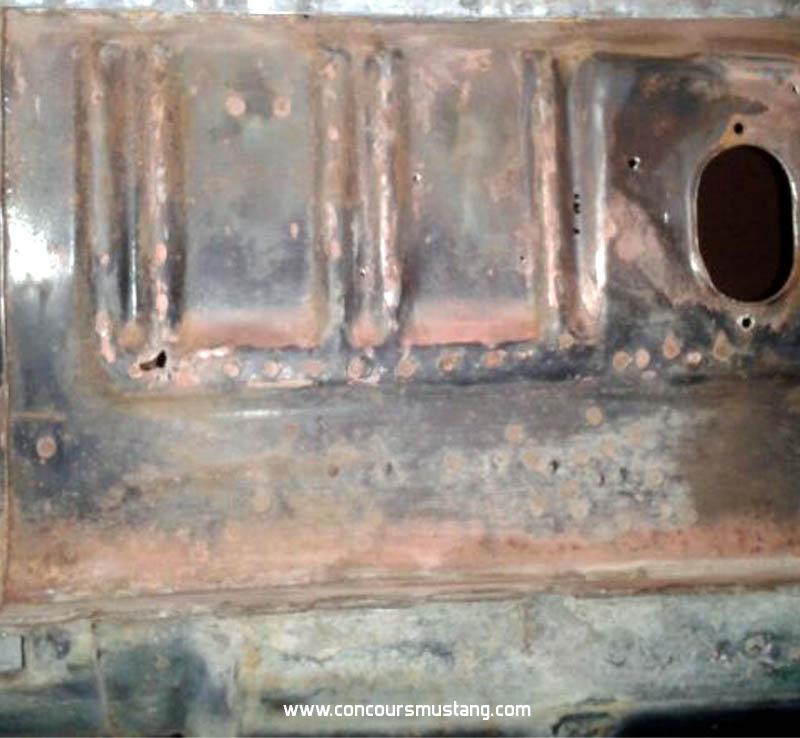
We see other high angle higher angle applications above in other pictures where the jet/gun was so close and the angle so great allot of paint built up on close panels reducing the amount and coverage of overspray inward on the undercarriage
As the spray gun or mounted jet reached the leading edge of the the rear wheel well and beginning of spaying again at the rear edge of the rear wheel well opening the paint the process produced "blow outs" on the surfaces behind and slightly above (in places) the pinch weld
Front/leading edge of opening example
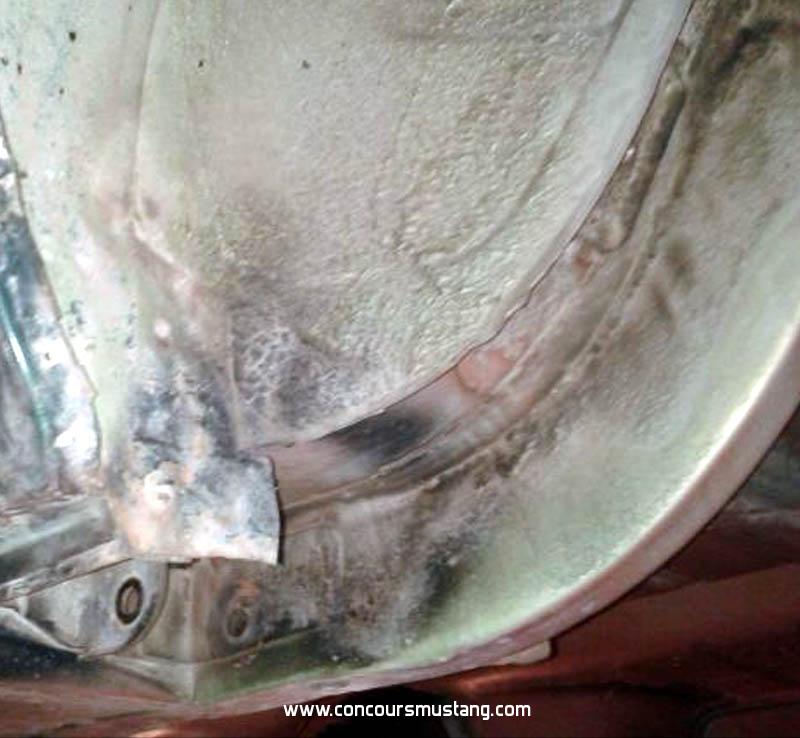
Rear/following edge of the opening. Further back you can make out the overspray from the rear quarter panel pinchweld blackout on the frame rail. Much easier to see this detail in the second picture from the top in this post
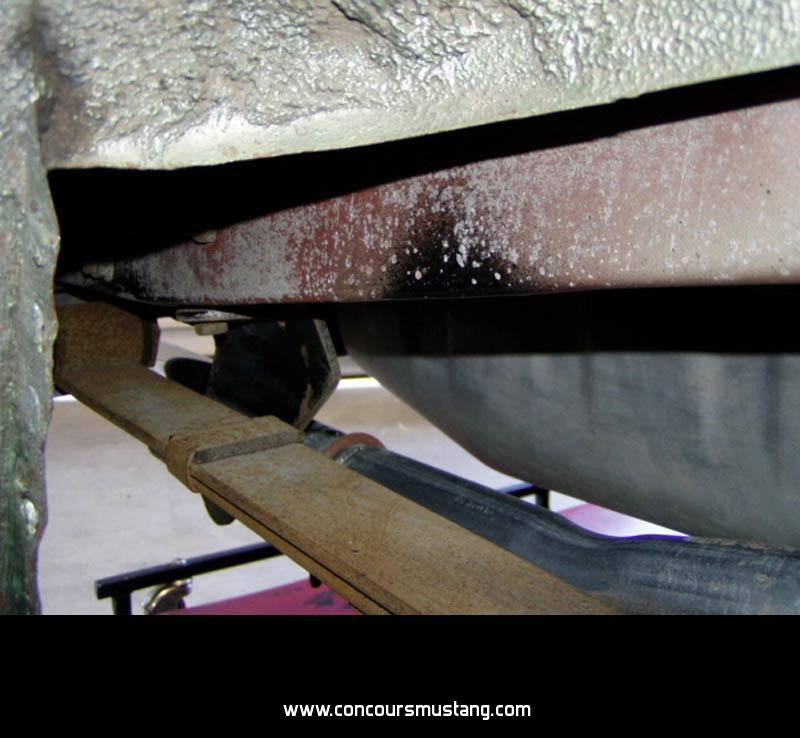
Often it is found greater/larger than these examples
Hope this helps